Chapter 2 All about your dirndl
Sure, the dirndl is the single most important element in your Oktoberfest outfit, but it’s not the only thing you need to think about. Equally as important as which dirndl you choose is how well that particular dirndl fits you. It’s important to get this right, so if you’re in any doubt, try on a couple of different sizes or cuts. Then you’ve got to accessorise right to make sure that the overall outfit works.
Your hair is crucial, too. Luckily, it’s easy and fun to give yourself a proper Oktoberfest hairstyle: why not watch our tutorials for some inspiration on how to do your hair? That leaves make-up as the final decisive element: our advice is to emphasise either your eyes or your lips, as trying to foreground both can end up looking overdone. Read on for more information on all of this – and on how to care for and wash your dirndl once you’ve wowed everyone at the Oktoberfest.
Traditional Bavarian hairstyles – tutorials and inspiration





Quick and easy plaits and braids for the Oktoberfest
In these tutorials, Corinna Fee and her friends show how to do your hair just right for the Wiesn. Some of the styles feature additional accessories or fresh flowers – and all of them are guaranteed to turn heads at the Munich Oktoberfest.
Crown Braid Wiesn-Frisur von Marie Drax
Wenn das Oktoberfest vor der Tür steht, zaubert Marie Drax ganz schnell und einfach ihre liebste Flechtfrisur. Als Crown Braid werden die Haare wie eine Krone über den Kopf geflochten. Ein funkelnder Haarreifen gibt der Frisur den letzten Schliff.
Hübsche Oktoberfest-Frisur von Olesja
Olesja zaubert mit der Technik eines holländischen Zopfes einen schönen Haarstyle für die Wiesn. Die Frisur wird als Seitenscheitel getragen und endet in einem eleganten seitlichen Flechtzopf.
Olesjas verspielter Seitenzopf
In diesem Video stylt Olesja eine Flechtfrisur, die für fast alle Haartypen funktioniert. Besonders raffiniert wird sie durch eine Strähne des Zopfes, welche noch einmal extra geflochten wird.
Romantischer Flechtkranz von Olesja
In dieser Variation zeigt Olesja eine elegante Frisur, die als Haarkranz über den Kopf geflochten wird. Das ganze wird dann am Hinterkopf in einer verspielten Haarschnecke befestigt.
How to wear your dirndl right
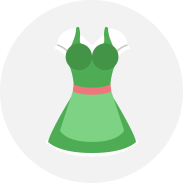
Which dirndl is right for me?
The first decision to make is whether you want a traditional, a classic, or a contemporary dirndl. Primarily, it’s a question of your personal style preferences, but your figure and the occasion need to be taken into account as well. Dirndls come in countless style varieties for all types of personalities, from floral and romantic through to exotic and eye-catching, but first and foremost, you should choose the shape and cut should to suit your figure. The good news? Dirndls tend to accentuate feminine outlines and there is one out there to suit every shape and size.
Another choice to take is between a lighter summer dirndl and a heavier winter variety. Then there are traditional blueprint dyes or glittery looks, as well as very special bridal dirndls for the Big Day… So whether you’re headed to the Oktoberfest or invited to a Bavarian wedding, you’re guaranteed to find the right dirndl.
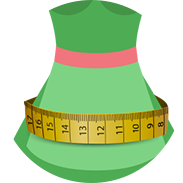
How do I know if a dirndl fits me?
Whatever shape or size you are, there is bound to be a dirndl out there for you. Retailers stock a full range of sizes and you can select the skirt length that is right for the occasion and for your figure: young, slender Oktoberfest-goers often opt for mini-dirndls; the midi (mid-length) dirndls are the all-purpose standard and generally just cover the knees; full-length dirndls are perfect for larger ladies, but also popular as formal wear for women of all shapes and sizes.
In terms of fit, make sure the bodice is tight to your midriff, but not overly so, as this will be uncomfortable and change the proportions of the outfit. If you’re concerned that a tight bodice won’t be flattering, try a few different cuts on: the right one will hide problem areas nicely.
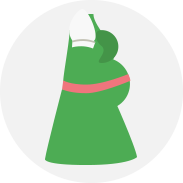
Can I wear a dirndl if I’m pregnant?
Although a dirndl bodice is tight-fitting, there’s no reason you can’t wear one during pregnancy. Depending on how far along you are, you may find that you can fit comfortably into a standard dirndl; as you approach full term, you can switch to special pregnancy dirndls. As a dirndl skirt is generously proportioned, the only real difference to a standard dirndl is the waistline, which is widened to give your baby more space.
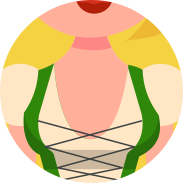
How can I get my dirndl neckline right?
Whether you’ve got a slender chest or an ample bosom, Rule Number One – in fact, the only rule – of dirndl décolleté is: don’t hide it, but make it work for you. Most dirndls have plunging necklines, so there’s no other choice. If you’re problem isn’t in generating cleavage, but it stopping it dominating your look, then – apart from wearing a well-fitted bra – the most important thing to do is to direct attention away from your chest up to your neck using jewellery or downwards to the waist with your apron bow and the fastening at the front of the dirndl.
If, conversely, you have trouble creating voluptuous cleavage, pair your dirndl with a push-up bra and leave the bodice to do the rest. With these simple tricks, your plunging neckline is guaranteed to turn heads!
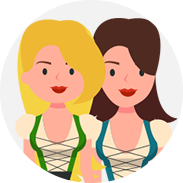
Which dirndl is best for my hair colour?
A dirndl dress which is properly matched to your hair colour creates a fantastic overall look. As a rule of thumb, blond hair works very well with blue and green, while brunettes can wear beige and natural colours as well as pink and even red. Black hair looks good on pastel tones, although brighter shades can work too, depending on your specific style; red-heads look great in orange and turquoise dirndls.
If you’re asking which dirndl is best for you, then don’t forget your eyes or skin-tone, either, as they play a major role. At the end of the day, though, there are no hard-and-fast rules, so the key thing is to go with your gut feeling.

What kind of make-up should I wear with a dirndl?
Wearing a dirndl is the perfect opportunity to make an occasion of it and go for more cosmetics than usual, but it’s best to tone down the colours: a natural look is a guaranteed winner. And you don’t have to stray too far from your normal routine: the most important thing is that the dirndl and your make-up match.
Specifically, you might want to try emphasising your eyes with liner and going for thick, luscious eyelashes. Lipstick-wise, this could be the time to do something different with big, juicy lips – but only do what you feel comfortable with. If you’re heading to the Oktoberfest, by the way, opt for water-proof make-up because the tents can get hot and stuffy – and you might be in there for a few hours…
Washing your dirndl
To enjoy your dirndl for as long as possible, make sure to care for the fabric properly. Premium textiles like silk, for instance, should never be washed at home: take them to the dry cleaners, where they will be cleansed and then pressed. If you have a cotton dirndl, however, you can wash it yourself.
Linen, too, can be washed at home, but be sure to read the label carefully; use a gentle detergent and the delicates programme on your washing machine. You can also hand-wash your dirndl to avoid damage. Remove any buttons made of horn, leather, or metal prior to washing.

Dirndl blouses tend to be easy-care and can be washed normally. When it comes to ironing your dirndl, the best thing to do is to turn it inside out, especially if the fabric is linen; both linen and cotton are easier to iron if they are still slightly damp. Whenever you’re not wearing it, keep your dirndl on a hanger to stop it creasing.
If you’ve only had it on for a few hours and it doesn’t need a full wash, just try airing it thoroughly – either outside or in the bathroom, where the steam when you take a shower will quickly remove any creasing. In your wardrobe, you should try not to crush the dirndl; if you have a particularly delicate or expensive dress, we would recommend putting it in a thin cotton covering between wears.

